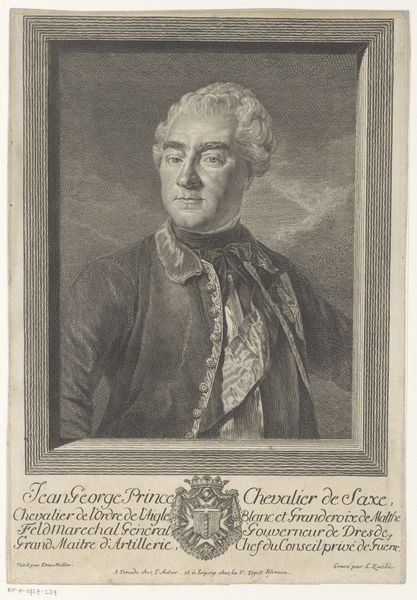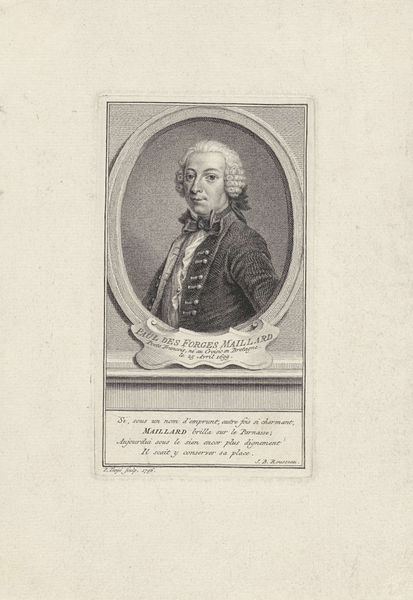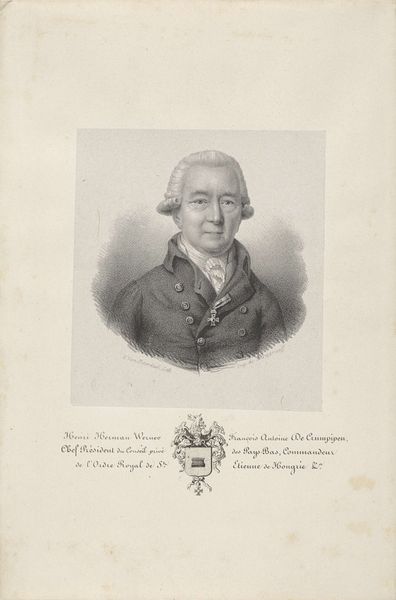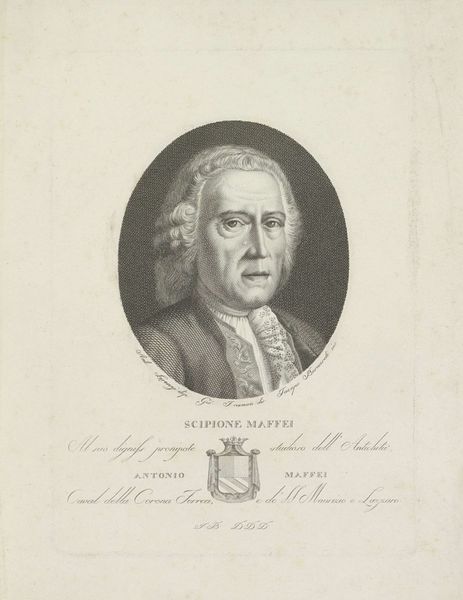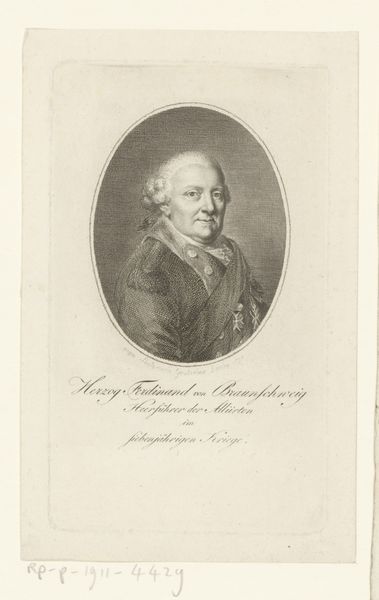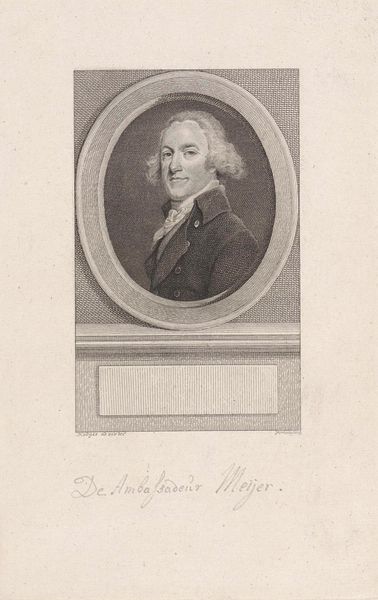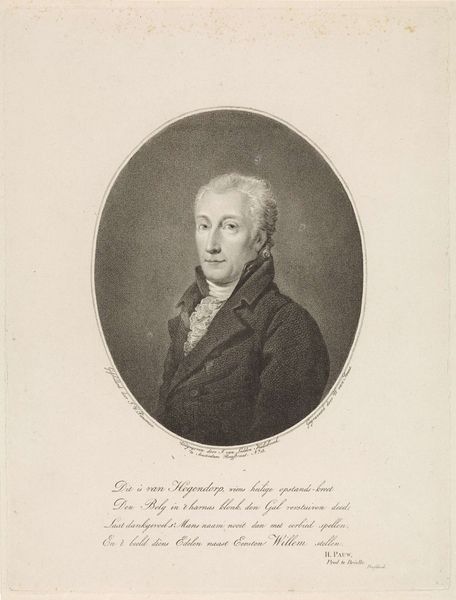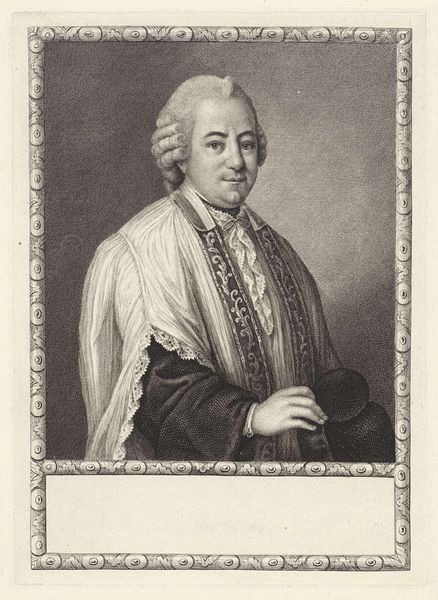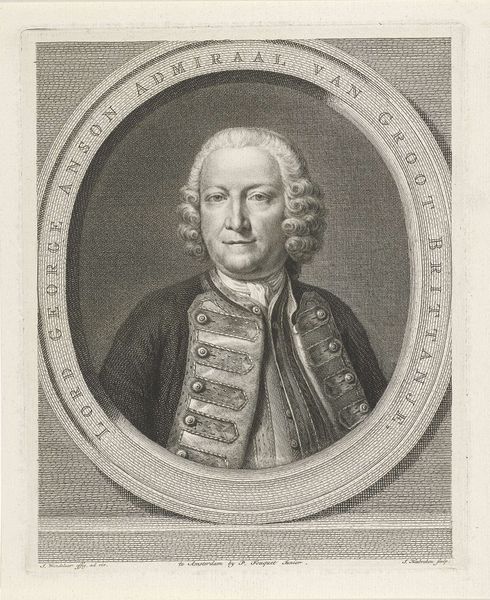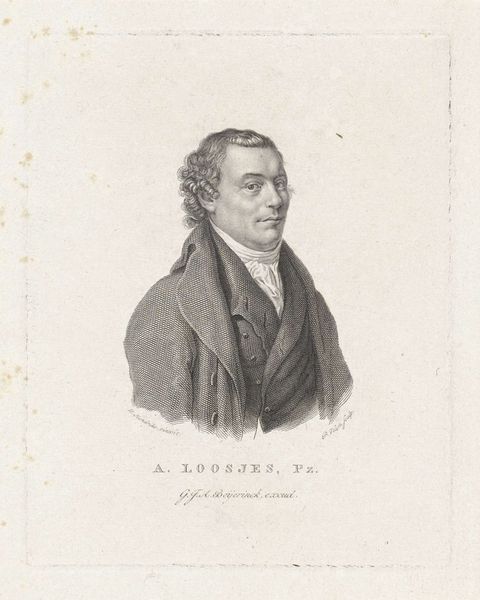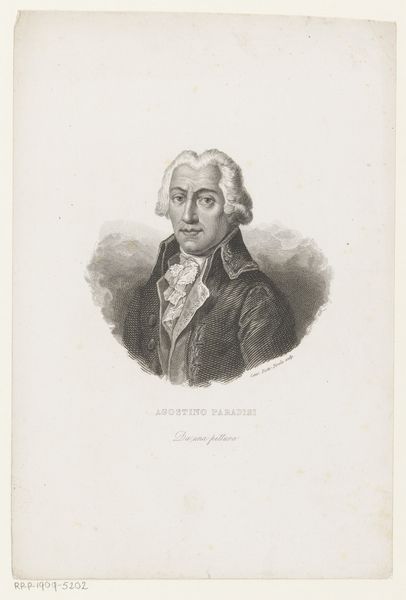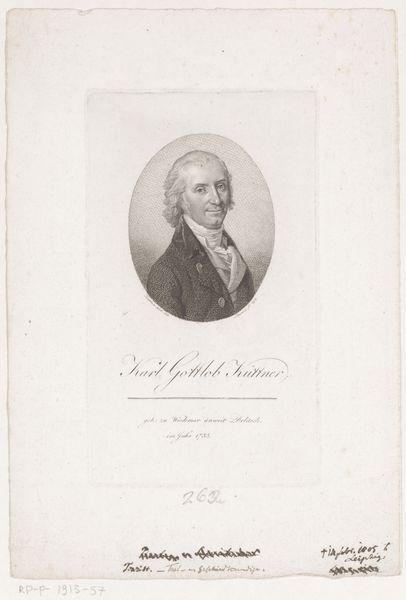
print, engraving
#
portrait
# print
#
pencil drawing
#
history-painting
#
engraving
Dimensions: height 264 mm, width 175 mm
Copyright: Rijks Museum: Open Domain
Curator: Look at this dignified gentleman! It’s a portrait, believed to have been created sometime between 1830 and 1840, titled "Portret van Joseph Ambroise de Crumpipen." Editor: My immediate reaction is that there’s an almost ethereal quality to it, like gazing at a figure emerging from the past. The lace collar feels significant. Curator: Absolutely, lace held immense symbolic weight during that period. The figure commands presence with such garb, alluding to aristocratic heritage, status, or involvement with the judiciary, which are of the institutions of this particular portrait. It’s interesting to examine it now, removed from the direct socio-political implications it once held. Editor: The lace, specifically, might be a signal of delicate power, of exerting influence through finesse. You can almost feel its subtle emotional pull on the viewer across centuries. I wonder what other sartorial clues are hidden within its visual fabric. The placement and emphasis makes me thing this individual's wealth and status were core tenets of his identity. Curator: Exactly. And in terms of history-painting we can really imagine that in 1830s there's almost something nostalgic. We get some kind of an imagery of what the past looked like while social norms evolve around new types of wealth. Editor: Do you think it would have had a different impact based on class differences or status levels during the time it was originally circulating? The cultural weight is carried even across history-painting like this. Curator: I agree, yes. Considering the role of art as a status marker, viewing it, and displaying would be totally different for a peer and for the lower classes. Editor: It is intriguing how the piece offers so many perspectives from which to understand that particular time period through the semiotics of that single image. Curator: Agreed. Hopefully our explorations of this fine “Portret” inspire you to consider how representation intersects with culture, class, and social position in other eras as well.
Comments
No comments
Be the first to comment and join the conversation on the ultimate creative platform.
